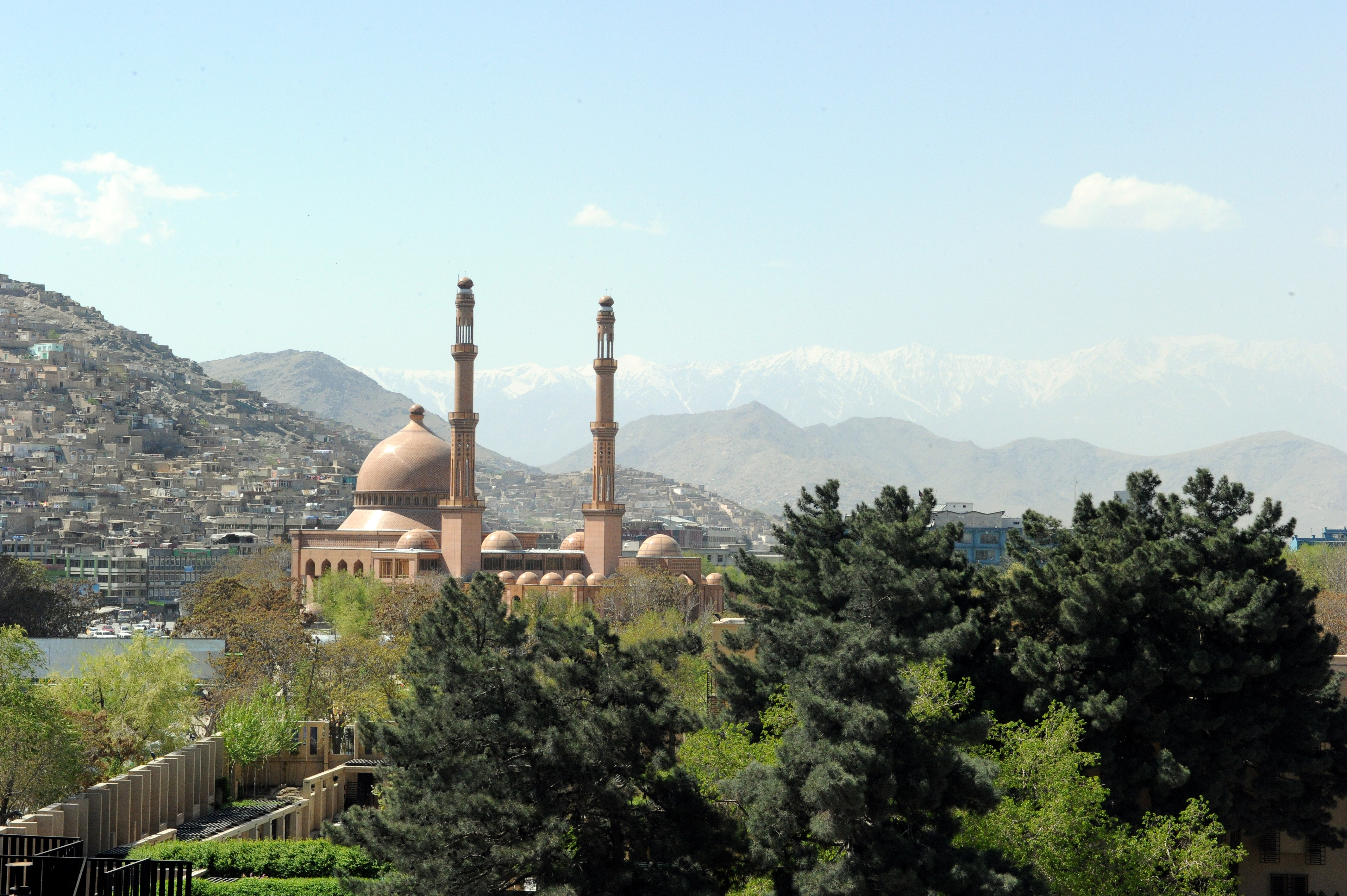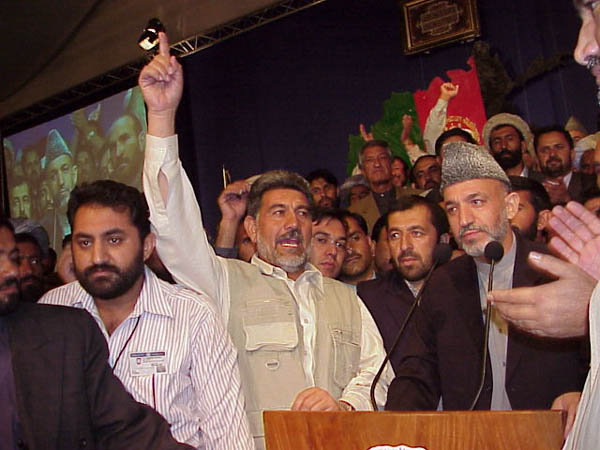|
Abdul Rahman Mosque
The Abdul Rahman Mosque ( ps, د عبدالرحمان جومات; Dari: مسجد عبدالرحمان), also known as the Grand Mosque of Kabul, is one of the largest mosques in Afghanistan. It is located in one of Kabul's central commercial areas called Deh Afghanan, near the Pashtunistan Square, Zarnegar Park, and across the once popular ''Plaza Hotel''. The building is three stories high, built on of land. One floor of the building is dedicated to women only. The mosque is named after an influential Afghan businessman named Hajji Abdul Rahman who has died but his sons continued the project. Construction of the mosque began in 2001 by Hajji Abdur Rahman but was delayed for several years due to red tape. The mosque has the capacity to serve 10,000 people at a time. There is also a madrasa inside the mosque and a library containing 150,000 books. The major work on the mosque was completed in late 2009 but the official inauguration took place in July 2012 which was attended ... [...More Info...] [...Related Items...] OR: [Wikipedia] [Google] [Baidu] |
Kabul
Kabul (; ps, , ; , ) is the capital and largest city of Afghanistan. Located in the eastern half of the country, it is also a municipality, forming part of the Kabul Province; it is administratively divided into 22 municipal districts. According to late 2022 estimates, the population of Kabul was 13.5 million people. In contemporary times, the city has served as Afghanistan's political, cultural, and economical centre, and rapid urbanisation has made Kabul the 75th-largest city in the world and the country's primate city. The modern-day city of Kabul is located high up in a narrow valley between the Hindu Kush, and is bounded by the Kabul River. At an elevation of , it is one of the highest capital cities in the world. Kabul is said to be over 3,500 years old, mentioned since at least the time of the Achaemenid Persian Empire. Located at a crossroads in Asia—roughly halfway between Istanbul, Turkey, in the west and Hanoi, Vietnam, in the east—it is situated in ... [...More Info...] [...Related Items...] OR: [Wikipedia] [Google] [Baidu] |
Madrasa
Madrasa (, also , ; Arabic: مدرسة , pl. , ) is the Arabic word for any type of educational institution, secular or religious (of any religion), whether for elementary instruction or higher learning. The word is variously transliterated '' Madrasah arifah'', ''medresa'', ''madrassa'', ''madraza'', ''medrese'', etc. In countries outside the Arab world, the word usually refers to a specific type of religious school or college for the study of the religion of Islam, though this may not be the only subject studied. In an architectural and historical context, the term generally refers to a particular kind of institution in the historic Muslim world which primarily taught Islamic law and jurisprudence (''fiqh''), as well as other subjects on occasion. The origin of this type of institution is widely credited to Nizam al-Mulk, a vizier under the Seljuks in the 11th century, who was responsible for building the first network of official madrasas in Iran, Mesopotamia, and Khor ... [...More Info...] [...Related Items...] OR: [Wikipedia] [Google] [Baidu] |
Mosques Completed In 2009
A mosque (; from ar, مَسْجِد, masjid, ; literally "place of ritual prostration"), also called masjid, is a place of prayer for Muslims. Mosques are usually covered buildings, but can be any place where prayers (sujud) are performed, including outdoor courtyards. The first mosques were simple places of prayer for Muslims, and may have been open spaces rather than buildings. In the first stage of Islamic architecture, 650-750 CE, early mosques comprised open and closed covered spaces enclosed by walls, often with minarets from which calls to prayer were issued. Mosque buildings typically contain an ornamental niche (''mihrab'') set into the wall that indicates the direction of Mecca (''qiblah''), ablution facilities. The pulpit (''minbar''), from which the Friday (jumu'ah) sermon (''khutba'') is delivered, was in earlier times characteristic of the central city mosque, but has since become common in smaller mosques. Mosques typically have segregated spaces for men and wo ... [...More Info...] [...Related Items...] OR: [Wikipedia] [Google] [Baidu] |
2009 Establishments In Afghanistan
9 (nine) is the natural number following and preceding . Evolution of the Arabic digit In the beginning, various Indians wrote a digit 9 similar in shape to the modern closing question mark without the bottom dot. The Kshatrapa, Andhra and Gupta started curving the bottom vertical line coming up with a -look-alike. The Nagari continued the bottom stroke to make a circle and enclose the 3-look-alike, in much the same way that the sign @ encircles a lowercase ''a''. As time went on, the enclosing circle became bigger and its line continued beyond the circle downwards, as the 3-look-alike became smaller. Soon, all that was left of the 3-look-alike was a squiggle. The Arabs simply connected that squiggle to the downward stroke at the middle and subsequent European change was purely cosmetic. While the shape of the glyph for the digit 9 has an ascender in most modern typefaces, in typefaces with text figures the character usually has a descender, as, for example, in . The mo ... [...More Info...] [...Related Items...] OR: [Wikipedia] [Google] [Baidu] |
List Of Mosques In Afghanistan ...
The following is an incomplete list of large mosques in Afghanistan: See also *Islam in Afghanistan *Lists of mosques References {{Mosques in Afghanistan Afghanistan Mosques A mosque (; from ar, مَسْجِد, masjid, ; literally "place of ritual prostration"), also called masjid, is a place of prayer for Muslims. Mosques are usually covered buildings, but can be any place where prayers ( sujud) are performed, i ... [...More Info...] [...Related Items...] OR: [Wikipedia] [Google] [Baidu] |
Hamid Karzai
Hamid Karzai (; Pashto/ fa, حامد کرزی, , ; born 24 December 1957) is an Afghan statesman who served as the fourth president of Afghanistan from July 2002 to September 2014, including as the first elected president of the Islamic Republic of Afghanistan from December 2004 to September 2014. He previously served as Chairman of the Afghan Interim Administration from December 2001 to July 2002. He is the chief (''khān'') of the Popalzai Durrani tribe of Pashtuns in Kandahar Province. Born in Kandahar, Karzai graduated from Habibia High School in Kabul and later received a master's degree in India in the 1980s. He moved to Pakistan where he was active as a fundraiser for the Afghan rebels during the Soviet–Afghan War (1979–1989) and its aftermath. He briefly served as Deputy Foreign Minister in the Islamic State of Afghanistan government. In July 1999, Karzai's father was assassinated and Karzai succeeded him as head of the Popalzai tribe. In October 2001 ... [...More Info...] [...Related Items...] OR: [Wikipedia] [Google] [Baidu] |
President Of Afghanistan
The president of the Islamic Republic of Afghanistan was constitutionally the head of state and head of government of the Islamic Republic of Afghanistan (2004–2021) and Commander-in-Chief of the Afghan Armed Forces. On 15 August 2021, as the Taliban took over Kabul, President Ashraf Ghani fled Afghanistan and took refuge in the United Arab Emirates.Archived aGhostarchiveand thWayback Machine After Ghani fled, the Taliban occupied the Arg presidential palace. Eligibility and selection process Article 62 of the 2004 Constitution of Afghanistan stated that a candidate for the office of President had to: * be a citizen of Afghanistan, Muslim, born of Afghan parents; * not be a citizen of another country; * be at least forty years old when declaring candidacy; * not have been convicted of crimes against humanity, a criminal act or deprived of civil rights by a court; * not have previously served more than two terms as president. Powers The 2004 Constitution granted the pre ... [...More Info...] [...Related Items...] OR: [Wikipedia] [Google] [Baidu] |
Pajhwok Afghan News
, logo = , image = , image_size = , type = Independent news agency , headquarters = Kabul, Afghanistan , language = English, Dari, Pashto , founded = 2003 , founder = Danish Karokhel , owner = Danish Karokhel , motto = Reflecting the Truth , market_share = , license_area = , area = Afghanistan , erp = , key_people = Danish Karokhel , launch_date = March 2004 , digital = , analog = , servicename1 = , service1 = , servicename2 = , service2 = , servicename3 = , service3 = , servicename4 = , service4 = , callsigns = , callsign_meaning = , former_callsigns = , groups = , former_affiliations = , website = , footnotes = Pajhwok Afghan News ( ps, پژواک خبري اژانس) ( prs, آژانس خبرى پژواک) is Afghanistan's largest independent news agency with its headquarters i ... [...More Info...] [...Related Items...] OR: [Wikipedia] [Google] [Baidu] |
Red Tape
Red tape is an idiom referring to regulations or conformity to formal rules or standards which are claimed to be excessive, rigid or redundant, or to bureaucracy claimed to hinder or prevent action or decision-making. It is usually applied to governments, corporations, and other large organizations. Things often described as "red tape" include filling out paperwork, obtaining licenses, having multiple people or committees approve a decision and various low-level rules that make conducting one's affairs slower, more difficult, or both. Red tape has been found to hamper organizational performance and employee wellbeing by meta-analytic studies in 2020. A related concept, administrative burden, refers to the costs citizens may experience in their interaction with government even if bureaucratic regulations or procedures serve legitimate purposes. Origins It is generally believed that the term originated with the Spanish administration of Charles V, King of Spain and Holy Roma ... [...More Info...] [...Related Items...] OR: [Wikipedia] [Google] [Baidu] |
Afghanistan
Afghanistan, officially the Islamic Emirate of Afghanistan,; prs, امارت اسلامی افغانستان is a landlocked country located at the crossroads of Central Asia and South Asia. Referred to as the Heart of Asia, it is bordered by Pakistan to the east and south, Iran to the west, Turkmenistan to the northwest, Uzbekistan to the north, Tajikistan to the northeast, and China to the northeast and east. Occupying of land, the country is predominantly mountainous with plains in the north and the southwest, which are separated by the Hindu Kush mountain range. , its population is 40.2 million (officially estimated to be 32.9 million), composed mostly of ethnic Pashtuns, Tajiks, Hazaras, and Uzbeks. Kabul is the country's largest city and serves as its capital. Human habitation in Afghanistan dates back to the Middle Paleolithic era, and the country's Geostrategy, strategic location along the historic Silk Road has led it to being described, pict ... [...More Info...] [...Related Items...] OR: [Wikipedia] [Google] [Baidu] |
Zarnegar Park
Zarnegar Park ( prs, پارک زرنگار, ''Park-e Zarnegar'') is an urban park in the center of Kabul, Afghanistan, north of the river. The park, a popular landmark, has a green hill in its center with trees and decorated with flowers. A large pavilion is located in the park which serves as Abdur Rahman Khan's resting place. History The park itself was developed in the late 1950s after the government's demolishing of several state owned buildings at the site. About 50 million afghanis were spent on developing the park, in a very central location of the city. The name "Zarnegar" ( prs, زرنگار, meaning ''adorned with gold'') is taken from the pavilion that existed here since the 19th century. The park became a very popular hotspot for civilians and local students who would meet and relax on the grass and benches. Soldiers from the garrison would also often come here, listening to Radio Afghanistan's public address system. In more recent years, the park has been a popula ... [...More Info...] [...Related Items...] OR: [Wikipedia] [Google] [Baidu] |





.jpg)
.jpg)
_-_cropped.jpg)